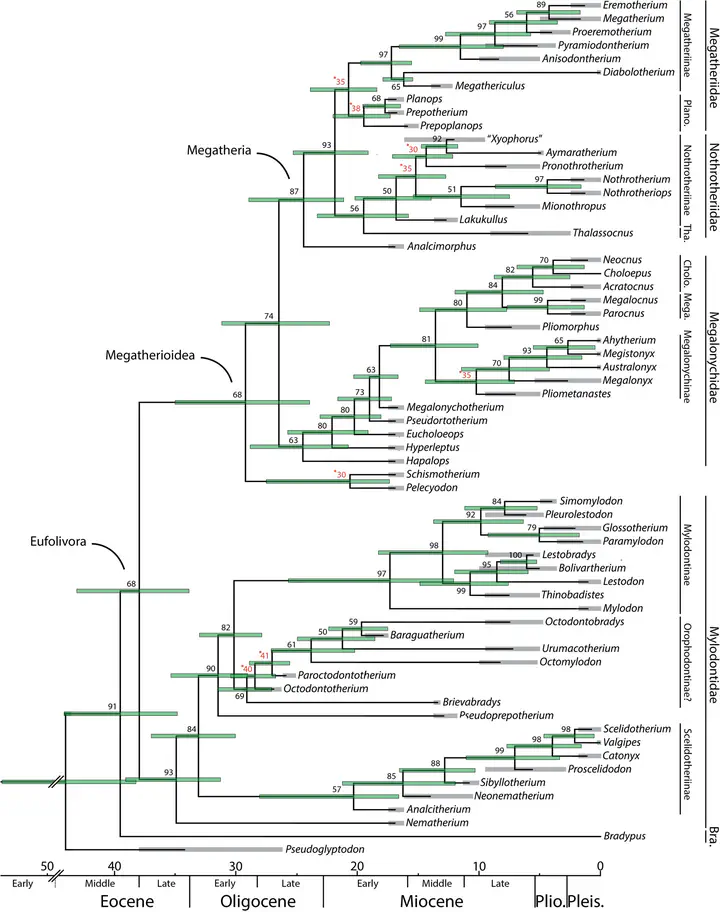Phylogeny, macroevolutionary trends and historical biogeography of sloths: insights from a Bayesian morphological clock analysis

Abstract
Sloths, like other xenarthrans, are an extremely interesting group of mammals that, after a long history of evolution and diversification in South America, became established on islands in the Caribbean and later reached North America during the Great American Biotic Interchange. In all three regions, they were part of the impressive Pleistocene megafauna. Most taxa became extinct and only two small, distantly related tree-dwelling genera survived. Here, we incorporate several recently described genera of sloths into an assembled morphological data supermatrix and apply Bayesian inference, using phylogenetic and morphological clock methods, to 64 sloth genera. Thus, we investigate the evolution of the group in terms of the timing of divergence of different lineages and their diversity, morphological disparity and biogeographical history. The phylogeny obtained supports the existence of the commonly recognized clades for the group. Our results provide divergence time estimates for the major clades within Folivora that could not be dated with molecular methods. Lineage diversity shows an early increase, reaching a peak in the Early Miocene followed by a major drop at the end of the Santacrucian (Early Miocene). A second peak in the Late Miocene was also followed by a major drop at the end of the Huayquerian (Late Miocene). Both events show differential impact at the family level. After that, a slight Plio-Pleistocene decline was observed before the marked drop with the extinction at the end of the Pleistocene. Phenotypic evolutionary rates were high during the early history of the clade, mainly associated with Mylodontidae, but rapidly decreased to lower values around 25 Ma, whereas Megalonychidae had lower rates at the beginning followed by a steady increase, peaking during the Late Miocene and the Pliocene. Morphological disparity showed a similar trend, with an early increase, followed by a slowly increasing phase through the Late Oligocene and Early Miocene, and ending with another increase beginning at the middle of the Miocene. Biogeographic analysis showed southern South America as the most probable area of origin of the clade and the main region in which the early diversification events took place. Both Megatheriinae and Nothrotheriinae basal nodes were strongly correlated with Andean uplift events, whereas the early history of Mylodontidae is closely associated with southern South America and also shows an early occupation of the northern regions. Within Megalonychidae, our results show Choloepus as a descendant of an island dispersing ancestor and a probable re-ingression to South America by a clade that originated in Central or North America.